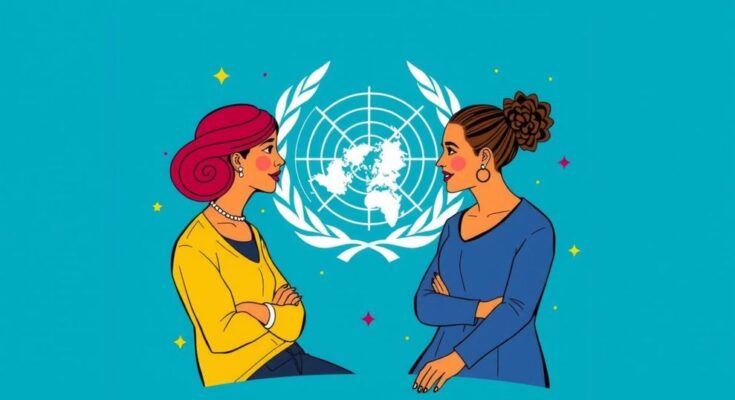This article underscores the importance of integrating intersectionality in climate action discussions, particularly at COP 29. Highlighting how multiple forms of discrimination intersect and impact vulnerability to climate change can enhance resilience strategies. Despite some resistance within the UNFCCC, acknowledging intersectionality is essential for achieving climate justice and inclusive policy development.
In the shadow of climate change’s menacing specter, the conversation now turns toward those most vulnerable —often those marginalized by intersecting systems of discrimination. Despite the growing recognition of intersectionality within climate discussions, such as the UNFCCC, integrating its principles remains a challenge. Angie Dazé emphasizes that to achieve climate justice, understanding the interconnected nature of social inequities is crucial; an intersectional lens reveals the unique struggles faced by individuals and communities in adapting to climate impacts. The term “intersectionality,” coined by Black feminist Kimberlé Crenshaw back in 1989, sheds light on how various forms of inequality interweave, from gender disparity and racism to ableism and ageism. This framework rewrites the narrative by shifting the focus from isolated identities to the intricate social structures at play, illustrating the need for a comprehensive approach to climate resilience. While gender inequality has received its share of scrutiny, other overlapping factors have often been overlooked, thereby undermining the diverse experiences of individuals facing compounded adversities. Recent discussions at the UNFCCC have begun acknowledging intersectionality, yet resistance persists, with some dismissing it as an academic idea irrelevant to broader contexts. Nevertheless, intersectionality’s relevance resonates loudly, especially in crucial climate arenas — adaptation, climate finance, and loss and damage. For instance, understanding how colonialism, ableism, and systemic racism intertwine with climate vulnerability is vital for crafting inclusive solutions and building resilience. The Intergovernmental Panel on Climate Change (IPCC) echoes this urgency, recognizing intersectionality as central to effective climate policies. Their findings indicate the necessity of elevating marginalized voices in adaptation practices, highlighting that exclusion from climate conversations perpetuates injustice. Embracing an intersectional approach fosters a dynamic analysis of power structures, enabling a deeper understanding of barriers and fostering inclusivity in climate action. As we prepare our sails for the winds of change at COP 29, an opportunity arises to reshape climate action frameworks to prioritize those at risk. Initiatives like the UAE Framework for Global Climate Resilience signal progress, yet much work remains. Integrating gender-responsive strategies with a focus on intersectional contexts holds the promise of a more just and resilient future. The path to climate justice is paved with inclusive dialogue, collective action, and a steadfast commitment to addressing the complexities of our social fabric.
As climate change intensifies across the globe, it is critical to recognize the experiences of the most vulnerable populations who often bear the brunt of its impacts. Intersectionality, a concept that highlights how different forms of discrimination—such as racism, gender inequality, and ageism—overlap, plays a significant role in understanding these experiences. Though gaining traction in the climate action sphere, intersectionality still faces resistance, particularly in formal international discussions like those held under the UNFCCC, which dictate climate policy and action.
In essence, advancing gender equality and human rights within the context of climate action is inextricably linked to embracing intersectionality. This holistic approach enhances our understanding of the diverse vulnerabilities individuals face due to intersecting inequalities. As COP 29 approaches, leveraging this perspective to inform climate policies will not only highlight the critical needs of marginalized communities but also pave the way for sustainable and equitable climate solutions.
Original Source: www.iisd.org



